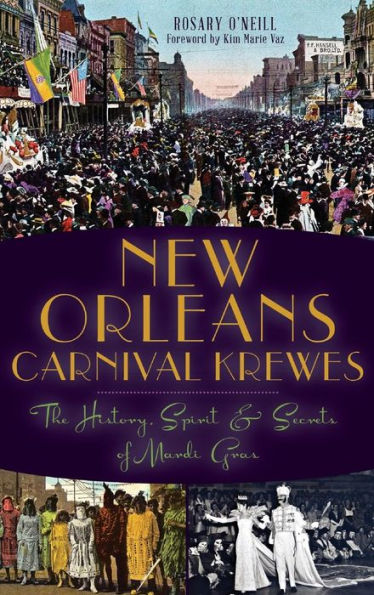New Orleans practically owns Mardi Gras, and you would be hard-pressed to find someone who would deny it. The wild celebration brings thousands of tourists to Louisiana each year, but none of it would be possible without the carnival krewes. The backbone of this Big Easy tradition, different krewes put on extravagant paries and celebrations to commemorate the beginning of the Lenten season. Historic krewes such as Comus, Rex, and Zulu date back generations and have become part of New Orleans' greater history, but today, what was once an exclusive position has widened their reach and new krewes are inaugurated regularly to enrich the flavor of Louisiana's cultural melting pot. Through careful and detailed research of over three hundred sources, author and New Orleans native Rosary O'Neill explores this storied institution, its antebellum roots, and its effects in the twenty-first century.
New Orleans practically owns Mardi Gras, and you would be hard-pressed to find someone who would deny it. The wild celebration brings thousands of tourists to Louisiana each year, but none of it would be possible without the carnival krewes. The backbone of this Big Easy tradition, different krewes put on extravagant paries and celebrations to commemorate the beginning of the Lenten season. Historic krewes such as Comus, Rex, and Zulu date back generations and have become part of New Orleans' greater history, but today, what was once an exclusive position has widened their reach and new krewes are inaugurated regularly to enrich the flavor of Louisiana's cultural melting pot. Through careful and detailed research of over three hundred sources, author and New Orleans native Rosary O'Neill explores this storied institution, its antebellum roots, and its effects in the twenty-first century.

New Orleans Carnival Krewes: The History, Spirit & Secrets of Mardi Gras
242
New Orleans Carnival Krewes: The History, Spirit & Secrets of Mardi Gras
242
Product Details
| ISBN-13: | 9781540208842 |
|---|---|
| Publisher: | History Press Library Editions |
| Publication date: | 02/11/2014 |
| Pages: | 242 |
| Product dimensions: | 6.00(w) x 9.00(h) x 0.56(d) |
